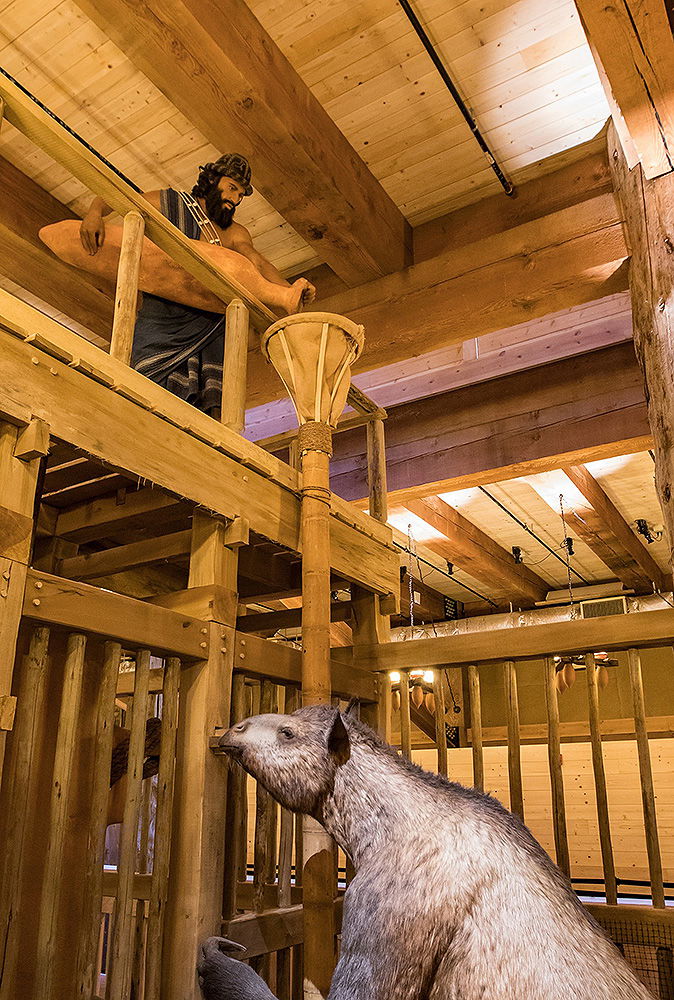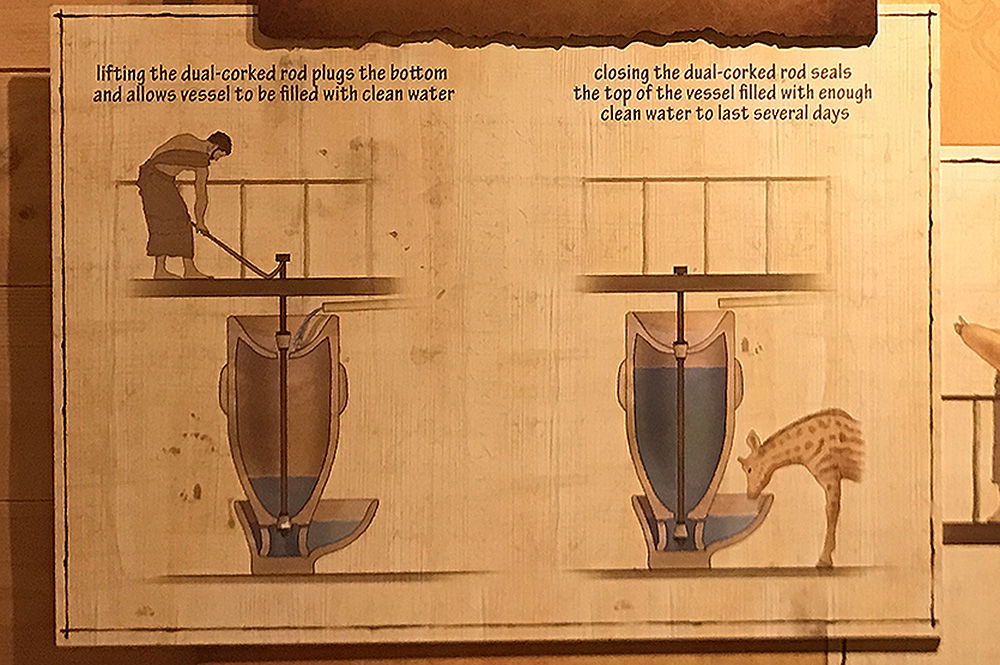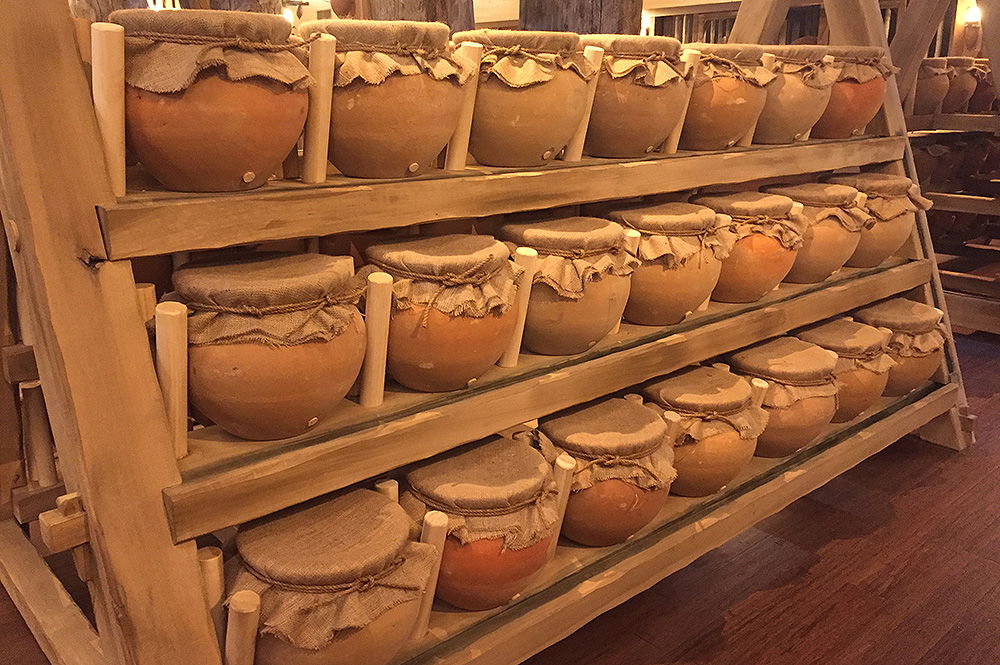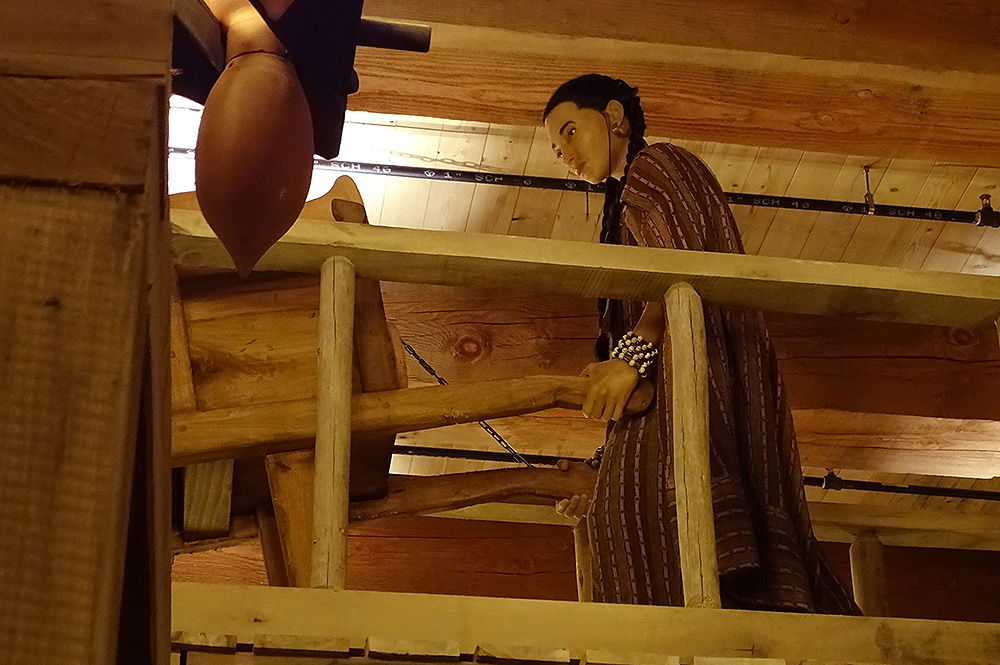Ark Survival 101: Animal Care
by Ark Encounter on May 18, 2017Have you ever wondered how Noah’s family might have cared for the animals aboard the Ark? How did they feed all the animals and remove the waste? The concepts in the Animal Care exhibit are models showing plausible solutions to these challenges. You can see more realistic examples of how Noah and his family might have cared for the animals as you tour the Ark Encounter.
Learn more about how they might have fed and cared for small and large animals as well as reptiles and amphibians.

Smart Feeders
Noah’s family may have used automated processes to handle many of the responsibilities related to animal care. For smaller animals, food and water systems could have been used to store several days’ worth of nourishment, allowing creatures to eat and drink whenever they wanted.

The feeders for larger animals could hold several days’ worth of pelletized food and dried vegetation. These foods could be stored on the mezzanine near the large animal cages, allowing someone to quickly refill the feeders from above.

Water Distribution
Water collected from the roof may have been stored in cisterns and then transferred through bamboo piping into smaller tanks for the larger animals. Valves and spigots could have been used to control water flow into and out of these large clay vessels near the animal enclosures.

Reptiles and Amphibians
Providing for hundreds of reptiles and amphibians would present unique challenges. The smaller varieties could have been kept in clay pots with some water at the bottom, allowing these animals to be kept in moist environments, if necessary. Fresh water could be poured through the pot’s fabric covering and waste removed through a drainage system.

Waste Removal
Slotted floors in the cages, combined with a series of angled trays placed beneath them, would move the waste of many animals to a collection tray at the bottom for quick cleaning.

Large animals would have produced plenty of waste during the Flood. Liquid waste could be drained away by a gutter system leading to an Ark-wide liquid waste reservoir. Solid waste could be moved to a solid waste collection area with shovels and wheelbarrows. These collection areas could have been emptied in a variety of ways, such as the use of a moon pool.

Manageable Workloads
God commanded Noah to bring representatives of every land-dependent kind of animal on the Ark. Providing for such a diverse assembly of creatures would have involved a lot of work. Based on our calculations using a worst-case approach to determining the number of animals aboard the Ark, each family member would have been responsible for an average of 850 animals.

While we may not know all of the details, we know they successfully accomplished their tasks since all eight people and the animals God sent to them survived the Flood (Genesis 8:15–10).
Start planning your trip to the Ark Encounter today to see how Noah and his family could have cared for all of the animals on the Ark. Share your favorite photos of the family fulfilling their daily activities with us on Facebook, Instagram, and Twitter using #arkencounter.